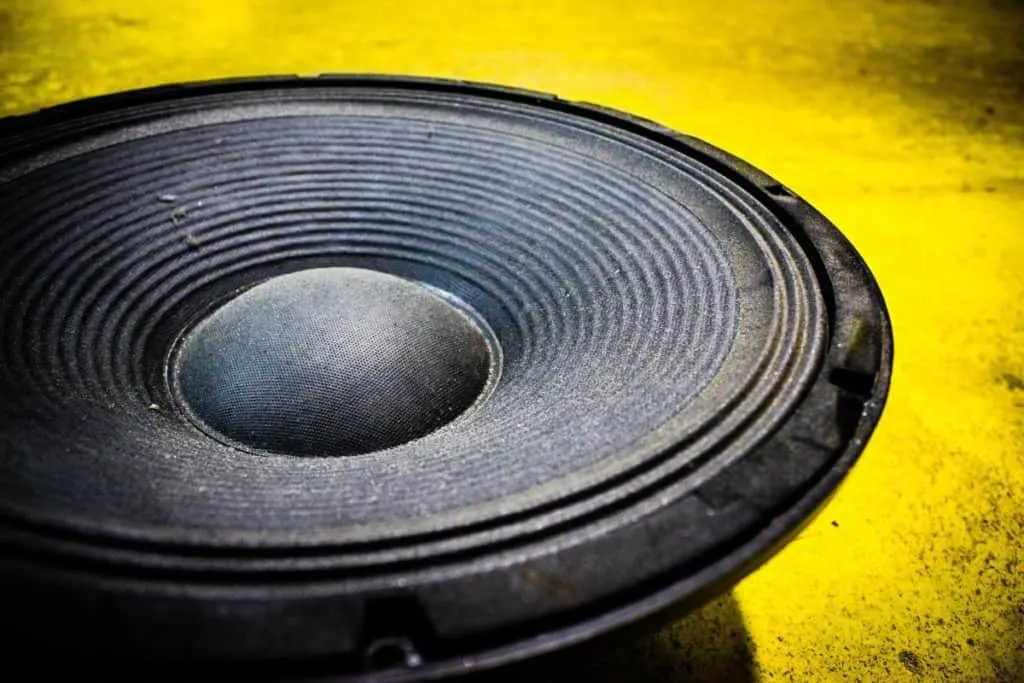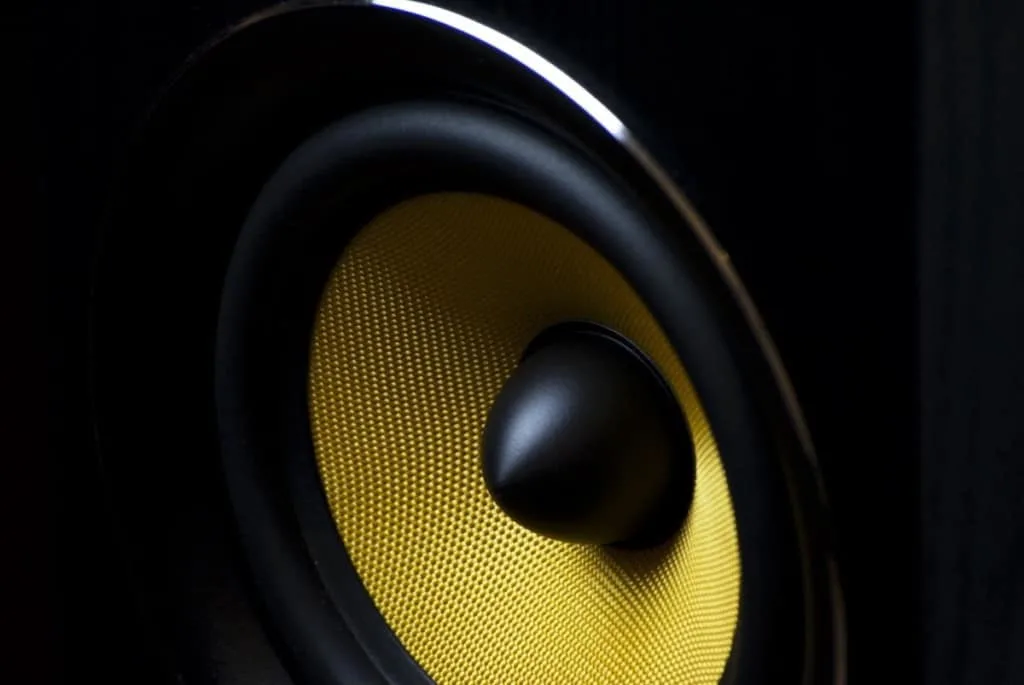To convert the digital signal produced by a device into an analog audio signal, you need a DAC. Short for a digital-to-analog converter, a DAC is essential if you want to play audio through powered speakers.
So, how do you use a DAC with powered speakers?
There are multiple possible methods of using DACs with powered speakers. The most common is achieved using unbalanced RCA inputs. You can simply run the unbalanced cable from the RCA output on your DAC, to the input of the powered speakers, switch on the devices and they should work instantly.
Nevertheless, powered speakers and DACs come in a variety of forms, with different capabilities.
The above method should work for the majority of setups, but other considerations should be accounted for.
In this definitive guide, we’ll examine the best ways to use a DAC with powered speakers and provide you with all of the information you need on the subject.

Common Ways To Use A DAC With Powered Speakers
If your DAC and powered speakers both cater to RCA connectivity, using them together should pose no issues. RCA cables are unbalanced, and therefore provide the ideal current flow for the interaction between a DAC and powered speakers.
Check out this DAC here on Amazon.
RCA cables are great at carrying audio and video signals from the source device to the output device. In this case, the source device is the DAC, while the output device is the powered speakers.
You might find that your powered speakers don’t cater to RCA connectivity.
If this is the case, they will likely use 3.5mm jack connectors. The principle and method remain the same, however, as both cables are unbalanced.
To summarize the process of connecting a DAC to powered speakers using unbalanced cables:
- Connect the DAC’s unbalanced input to the speaker’s unbalanced output
- Turn on the DAC
- Turn on the Speakers
It’s that simple.
However, as I previously touched upon, some DACs and powered speakers may not cater to this connection method. Some may require a balanced XLR connector. The process is still the same – simply hook the XLRs up to the respective inputs and outputs of the two devices, and they should work right away.
Regardless of the cables, you use to connect the DAC with your powered speakers, you will need to make sure that it is first hooked up to the sound source.
Most DACs connect to a computer or laptop via USB or another common connector. This is how the digital signal from the sound source enters the DAC for conversion initially.
You may also find that for the DAC to work, you have to install some drivers on your computer or laptop.
These are usually provided by the manufacturer via their website. Once the necessary drivers are downloaded and installation has been completed, the DAC is ready to be used with your powered speakers.
Check out these popular powered speakers here on Amazon
Why A DAC Is Required
DACs are often overlooked when we consider an audio setup. Despite them being undoubtedly vital to the process, they are discreet devices that do much of their work in a way that doesn’t draw our attention to them.
To fully understand how to use a DAC with powered speakers, we must establish what a DAC is, and why it is so vital to the process. Without the digital-to-analog conversion that is performed, the powered speakers would be completely useless!
Likewise, without speakers or headphones, the DAC would be incapable of playing audio. The relationship between the devices is therefore interdependent. Despite this fact, DACs are still not given the credit they rightfully deserve.
What Exactly Is A DAC?
It is a device that takes pure digital signals from your computer, laptop, phone, or any other audio-playing device.
These signals are originally produced in the form of a series of 0s and 1s. Powered speakers or headphones are incapable of converting these signals, let alone playing them. That’s where the DAC works its magic!
The digital signals produced by a computer are converted into analog waveforms by the DAC.
This prepares the audio for playback through powered speakers. At the point of conversion, the DAC cannot output the signal with enough strength, and therefore an amplifier is required.
I suspect that the reason DACs are often overlooked in comparison to other devices like speakers and headphones is that they are often installed within devices without us seeing them.
Every playback device that can output audio will have an inbuilt DAC and amp combination. Without them, there would be no way it could play back any audio.
- This explains why some powered speakers can be plugged straight into the 3.5mm jack input of a computer and play audio without an external DAC.
The inbuilt DAC performs the conversion process, and this allows the speakers to pick up and play the amplified signal.
Check out this video that is intended as a beginner’s guide to DACs.
External DACs
At some point, most musicians or audiophiles are likely to consider using a standalone DAC instead of the one that is built into their computer. External DACs can offer faster and more efficient conversion, therefore improving the overall sound and performance of powered speakers.
Although all computers have inbuilt DACs and amps, they are usually installed by the manufacturer as a necessity rather than a top-end component.
This is understandable, as a computer manufacturer has to keep costs down and ensure that all of the various components of the device perform to a good standard.
- Getting an external DAC to use with your powered speakers is therefore a great way to improve your overall audio setup. The more expensive varieties are likely to produce a cleaner, more crisp sound that is true to the audio source.
Cheaper DACs, like the ones that are installed in computers, are liable to produce some distortion and can color the tone slightly.
An advanced model, with its quality inner components and circuitry, will minimize this problem significantly and ensure that when the DAC is used with powered speakers, the output is as clear as possible.
To further improve the performance of powered speakers, you could combine the DAC with a preamp.
This prepares the signal for the speakers and allows you to shape the tone before the playback. Preamps often have unique ways of coloring the sound, and they provide multiple controls that can be used to adjust the sonic properties.
I have written an article that discusses using a DAC without an amp. You can find it here.
Other Considerations For DACs And Powered Speakers
When discussing the best way to use a DAC with powered speakers, there are some additional points we must cover.
Powered speakers are a complex subject, with so much variety available from model to model. They often offer different connectivity options, and the sound they produce varies in characteristics.
Powered speakers are often called “Active Speakers”“. The main difference between powered speakers and the other common type, passive speakers, is that the latter requires eternal power amplifiers, while the former has an amplifier built-in and is, therefore, easier to use with a DAC.
- One aspect that will significantly affect the results you get when combining a DAC with powered speakers, is the size of the cone.
Powered speakers often come in four main sizes. These are:
- 8 inch
- 10 inch
- 12 inch
- 15 inch
The sizes don’t just affect the appearance of the speaker.
They reflect the size of the woofer, which is the device responsible for driving the low-end frequencies. When the woofer size is increased, the powered speaker can produce more of the bass frequencies from the converted analog signal provided by the DAC.
Another thing that will affect the performance of powered speakers when used with a DAC is wattage.
A common misconception is that the more watts a speaker can produce, the better. Volume has nothing to do with watts. A better way to gauge the dynamic capabilities of powered speakers would be to refer to the SPL measurement which is presented in dB (decibels).
The table below presents some of the best-powered speakers on the market and their specifications.
| Powered Speaker | SPL | LF Driver Size |
| PreSonus Eris E3.5 | 100 dB | 3.5” |
| M-Audio AV32 | 101.5 dB | 3” |
| Avantone Pro Active | 104 dB | 5.25” |
| Mackie CR5-XBT | 105 dB | 5” |
Using a DAC with powered speakers is simple.
It only gets complicated when you start to introduce other devices for enhancing the overall sound. For that reason, it’s always best to start with the basics and build up your audio system from there.

Related Questions On Dacs And Powered Speakers
Do USB mics need phantom power?
USB microphones do not need phantom power. They get sufficient power from the USB connection with the computer. It simply receives the audio, converts it, and outputs it back through the USB cable into the computer.
Can TRS connectors carry phantom power?
TRS cables cannot carry phantom power, because their contacts do not mate simultaneously. This could cause the connection to short when it is plugged in. TRS devices should never require phantom power to operate.
What are condenser mics predominantly used for?
Condenser microphones are versatile and used for multiple recording purposes. The most common use is for recording vocals because they provide unrivaled attention to detail. They are also used to record guitars, drums, and piano.
You may also be wondering if an audio interface can be used as a DAC. Check out my article on this subject here.
